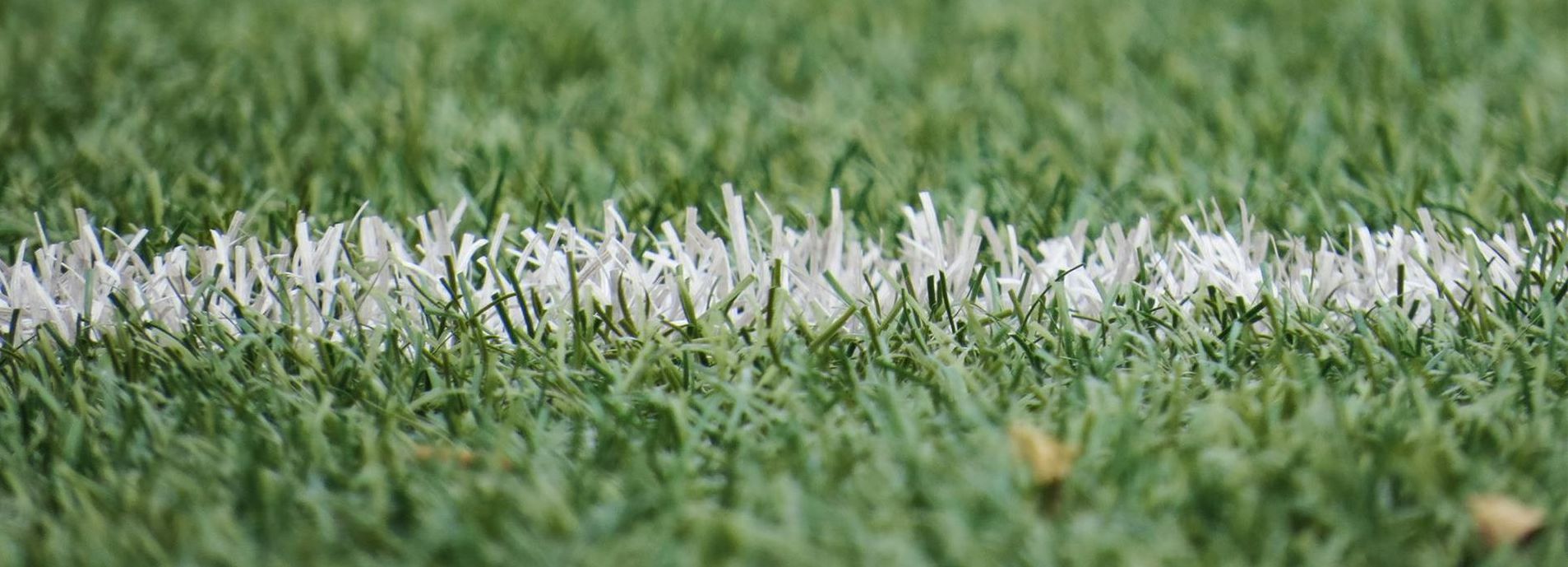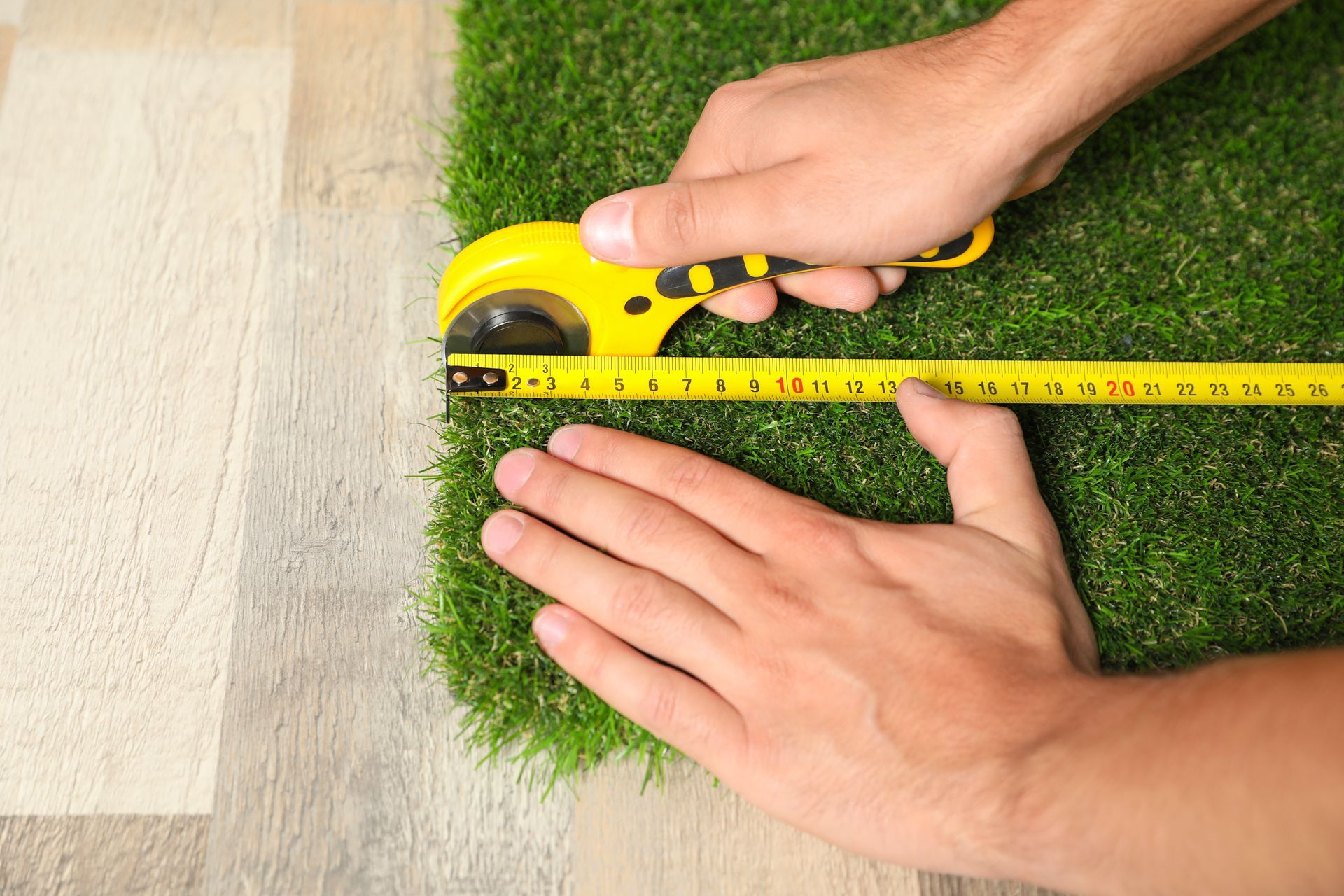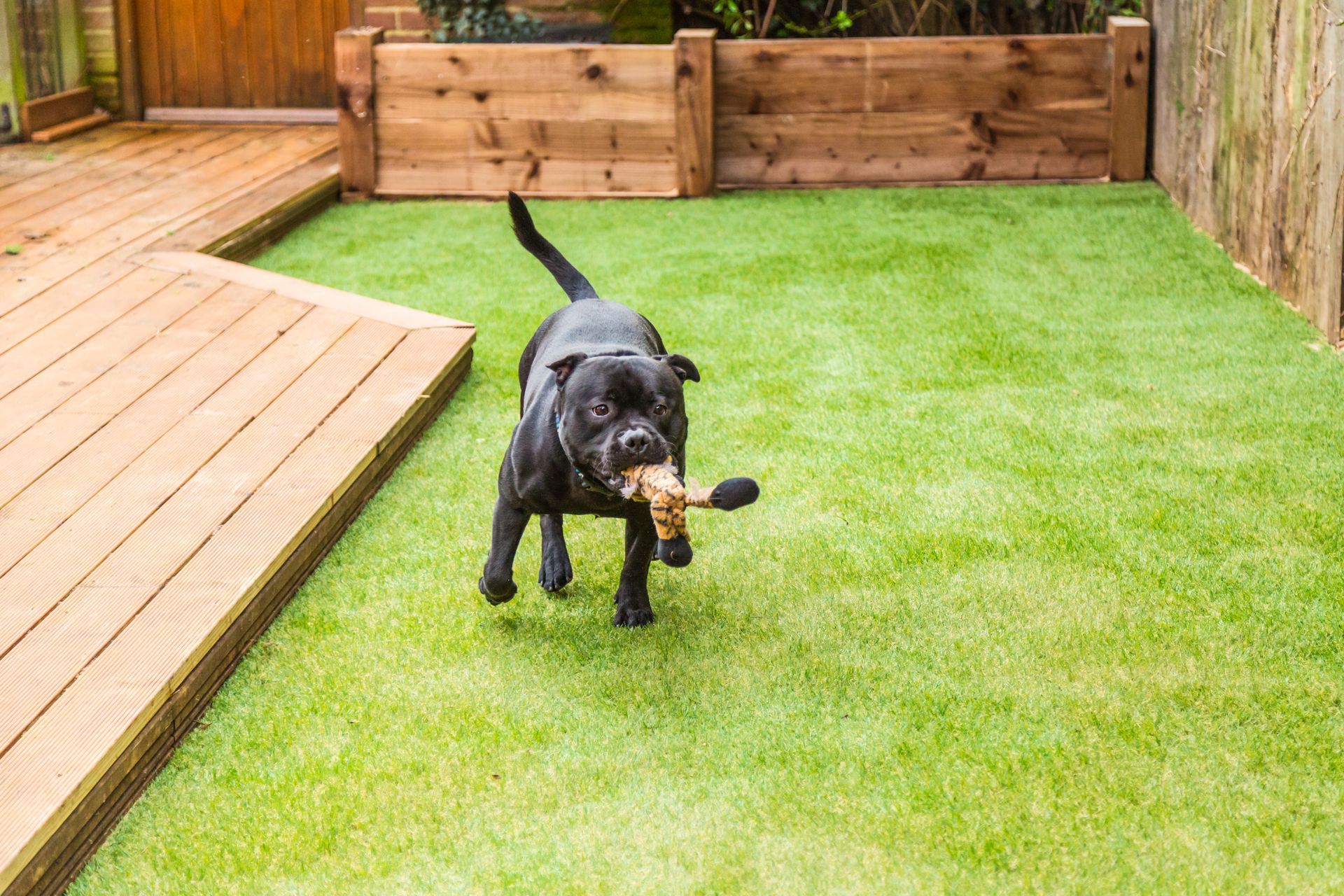
Maintaining and Cleaning Turf/Artificial grass
Phoenix's desert climate poses unique challenges for artificial turf, especially for pet owners. Extreme heat, intense sunlight, and pet usage mean you'll need a regular maintenance routine to keep your synthetic lawn safe, clean, and long-lasting. Below are several considerations to help Phoenix homeowners maintain their pet-friendly artificial grass year-round.
Phoenix summers frequently soar into triple digits, and artificial turf can become extremely hot – in fact, studies found turf can get as hot or hotter than asphalt or concrete under the sun. Such heat can be uncomfortable or even unsafe for pets (hot turf can burn paws). To keep the turf cooler, consider measures to reduce heat retention: using a heat-resistant infill (like light-colored silica sand) and providing shade over the turf can significantly lower surface temperatures. If possible, install shade sails, pergolas, or even use patio umbrellas to block direct sun during peak hours. On especially hot afternoons, give the grass a quick mist or hose-down to dissipate heat before your pets play outside. These steps will help maintain a safer, cooler surface for both pets and people during Phoenix’s blistering summers.

Essential Tools and Equipment for Effective Turf Cleaning
For homeowners and renters invested in keeping their artificial turf pristine, having the right tools is crucial. Here is a quick guide on what you need, and what to do.
First, having a soft-bristle brush, similar to a shop broom, will help to lift and separate the fibers, and prevent matting without causing damage. This can also be used simply to remove twigs and leaves, especially during the fall & spring, to prevent mold or mildew. Throughout the year, routinely use this turf brush to keep fibers upright and check for any signs of wear or damage. Leaf blowers work well for debris, but not for lifting the fibers.
Secondly, a broom with stiff bristles, or a turf rake, can be useful for larger areas to dislodge debris, or for helping with stubborn grime, or breaking up accumulated ice. Additionally, a stiff turf rake is handy for distributing infill material evenly and maintaining proper turf height (more on that below).

Cleaning Your Turf for Maximum Longevity
Regular, preferably monthly, cleaning is key to essential in the life of your artificial grass. Begin by removing debris like leaves, twigs, and pet waste. For stains, use a mild detergent mixed with water and scrub with a soft brush. Vinegar mixed with a small amount of dish detergent works great with stains AND odors; or sprinkle baking soda, to naturally neutralize any lingering odors before rinsing. A specialized enzymatic cleaner designed for artificial grass can also help break down odors and stains effectively. Make it a habit to remove solid pet waste daily and hose down the turf in that spot to prevent staining or residue. Urine areas should be rinsed more thoroughly at least once a week to dilute salts and avoid odor buildup (dogs often use the same spots, making targeted rinsing easier).
Rinsing afterwards with a garden hose to clear away detergent and residue. For more thorough cleaning, especially after heavy use, a pressure washer can be effective, but use it cautiously on a low setting to avoid lifting or harming the turf. When it comes to washing the turf, you can use a hose with a flow restrictor to keep the pressure down, and to conserve water while ensuring proper rinsing.

A Year-Round Maintenance Checklist for Turf
Weather conditions can significantly affect artificial grass. Maintaining your artificial grass year-round involves regular and seasonal tasks. Spring is a good time to inspect for winter damage and perform a deep clean to remove accumulated debris. Heavy spring or summer rains can lead to water pooling if drainage is insufficient; ensure proper drainage systems are in place to prevent this issue.
Summer maintenance should focus on cooling the turf with occasional rinsing to prevent heat buildup. Also, summer heat can cause turf fibers to flatten and infill materials to shift. Don’t leave metal items (like tools or toys) out in the sun on the turf, as they can heat up and scorch the grass. Infill migration, where the infill material shifts or settles unevenly, can be corrected with a turf rake to redistribute the infill. Seam separation can occur where turf sections join. If you spot minor damage like a small tear or loose seam, repair it promptly using an artificial turf repair kit or adhesive tape before it grows larger. A professional can also reattach or repair seams if needed. Addressing these problems promptly ensures your turf remains in excellent condition.
Winter is the time to check for any issues caused by ice or snow and ensure the turf is clear of heavy, wet debris. Gently remove snow with a broom and avoid using sharp objects to prevent tearing.

Preventing Mold and Mildew on Turf
Mold and mildew thrive in damp conditions, so preventing them involves keeping your turf dry. Ensure proper drainage around your turf to avoid water pooling. If your turf gets wet, or gets a lot of melting ice and snow, use a leaf blower or squeegee to remove excess water and promote quick drying. Regular cleaning helps prevent mold spores from settling. For persistent problems, applying a mildew-resistant spray can offer additional protection.
Prevent Weeds in Your Artificial Grass
Weeds can be a nuisance in artificial grass areas. Phoenix winds can carry seeds that settle in the small amount of dust or organic matter on your turf. To prevent them, ensure that the base layer beneath the turf is well-prepared and weed-free before installation. Regularly inspect the turf for weed growth and manually remove any that appear. Applying a weed barrier fabric before laying turf can further prevent weed penetration. If weeds emerge, use a non-toxic weed killer suitable for artificial grass or carefully pull them out by hand to avoid damaging the turf. Prevention prior to laying turf is best, but not always applicable...

Understanding Turf Infill: What It Is and How to Maintain It
Turf infill is a crucial component of artificial grass, providing stability, cushioning, and support to the turf fibers. Common types of infill include sand, rubber, and organic materials. To maintain infill, regularly brush the turf to redistribute the infill evenly and prevent compaction. Over time, infill may settle or migrate; topping up with fresh infill can restore its effectiveness. Ensure the infill level is appropriate—too little can lead to instability, while too much can cause excess wear on the turf. Proper infill maintenance is essential for maintaining the aesthetic and functional qualities of your artificial grass.
By practicing these preventive measures and repairs, you’ll greatly extend the life of your synthetic lawn. High-quality pet-friendly turf in Phoenix can last 10–15 years or more with proper care!

